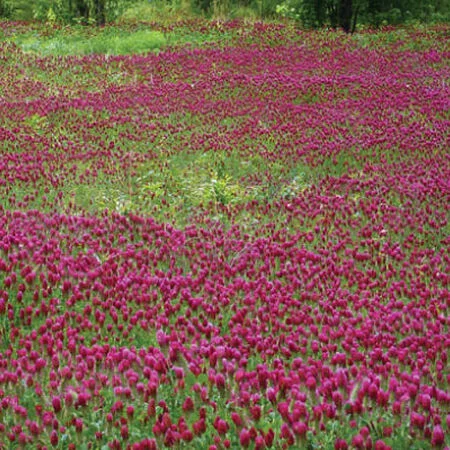Early Spring Food Plots
- turkeycreektrees
- Mar 11, 2024
- 3 min read
Well for most of us it is going to be a very early Spring. Never in the span of growing fruit trees would I have ever envisioned digging trees at the end of February. However, here we set at the end of the 1st week in March and we have been digging nursery stock for 2 weeks now. I apologize for the gap in blog posts, but things had to take a major priority shift in the last 2 weeks. Spring is not the usual time of year that most of us think of planting food plots. Many plants are starting to green up and most often the tender new growth is highly desirable by almost every species of wildlife. There have been 4-5 months of no new, fresh growth and so the 1st push of leaves is a huge draw to wildlife.
Much has been written in the last few years about soil health and the benefits of keeping a actively growing crop on your soil as much of the year as possible. Not only are there soil benefits, but wildlife (especially deer) are at their lowest level of body condition of the entire year as we transition from Winter to Spring. The daily demand of growing fawns in pregnant does is increasingly substantially. Bucks are still trying to regain weight lost from last Fall's rut and prepare for growing new antlers. Studies have been conducted that show fawns born to mothers in above average body condition have greater survival rates when born (which is logical), BUT the fawns born to those does also express their genetic potential at a much earlier age (such as large antlers). Full genetic potential is expressed much earlier in an individual's life when consecutive generations have consistently had higher body condition ratings. Consecutive generations of fawns show larger and larger antler potential even though the genetic combinations are from parents originating in areas known for lesser quality antlers. Meaning that quality genetics can be in your local deer herd, but simply isnt being fully expressed due to lack of food at key times of year. As wildlife habitat managers we need to be looking at what is in the best interest of our wildlife populations year-round, not just the small window of time when we might be hunting them.

There are a number of early season crops that can be planted once the soil temperatures reach the mid to upper 30s. Those crops will actively begin growing and providing benefits to both our soil and wildlife populations. Yes, I know that planting crops can be time consuming and does cost some money, but you really need to look at your long-term goals if you want to maximize and maintain the healthiest populations of wildlife. Keep in mind that cool season plants that are high in protein are the most desirable to deer. Common Vetch, Chick Peas, Red Clover (as well as most clovers) and Winter Peas are all at 19% or higher in forage protein. Deer at this time of year are no longer looking for food sources that are high in fat and carbohydrates, protein rules!
Red Clover Winter Pea Seed
Light tillage, broadcasting and then cultipacking can definitely produce a good crop. For those with no till drill systems these can all be planted that way as well. Germination is generally fairly quick for all these species and if you are looking at them only as short terms cover crops and early food for wildlife they can be planted at a higher seeding rate. Some clovers are excellent at reseeding and can be viable perennial crops for a few years before needing to be reseeded. Keep in mind that these cool season crops are also excellent at attracting bugs which are a vital food source for turkey poults and quail chicks. If planting with quail or turkeys in mind keep seeding levels down to allow for stands that are navigable by freshly hatched chicks and poults. The other great thing about the plant varieties I just listed is that they are all legumes, which means they will be bumping the nitrogen level in your soil for warm season crops to be planted later in the growing season.





